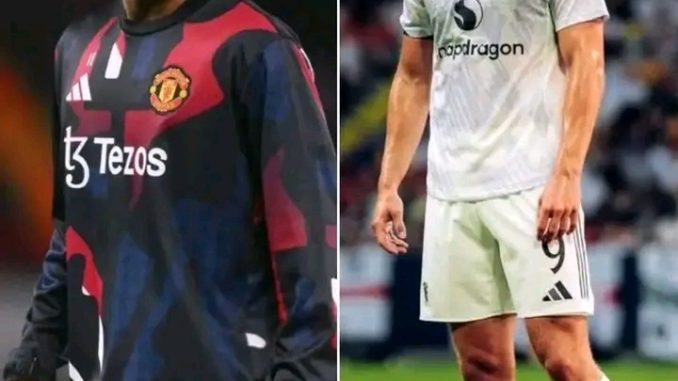
Rasmus Højlund’s place at Manchester United has come under intense scrutiny as his recent performances and fitness struggles have dominated discussion. The young forward’s ongoing goal drought has led to questions about his effectiveness, while Alan Shearer’s stinging remarks, labeling him “damaged” and “not ready to lead the attack,” have only amplified the criticism. Matters worsened when manager Ruben Amorim opted to bring Joshua Zirkzee back from injury for the Europa League final, bypassing Højlund entirely, a move many see as a signal of diminishing faith.
A run of 16 games without finding the net has cast a shadow over Højlund’s ability to deliver in the high-pressure role of Manchester United’s lead striker. This prolonged dry spell has left fans and pundits alike wondering if he possesses the confidence, composure, and consistency needed at this level. The lack of end product has quickly shifted the narrative from patience and potential to impatience and doubt.
Beyond his form, fitness concerns have also loomed large over Højlund’s career at Old Trafford. A history of injuries has repeatedly disrupted his rhythm, making it difficult for him to build momentum. For a striker, being physically unavailable for long stretches not only halts personal development but also forces managers to seek alternatives, potentially pushing him further down the pecking order.
Zirkzee’s return to action, despite his own fitness worries, could be interpreted as a direct challenge to Højlund’s role in the team. Amorim’s willingness to gamble on Zirkzee in a crucial final, rather than trust Højlund, suggests a readiness to explore other attacking options. Such decisions can send a clear message to a player — that their position is far from secure.
If Højlund fails to rediscover his scoring touch and stay injury-free, he risks drifting to the fringes of the squad. This scenario could force him to consider a move elsewhere to secure regular game time, potentially cutting short his Manchester United career before it truly takes off. The club, too, could be prompted to invest in a more reliable goal threat to lead the line.
While Amorim has publicly defended Højlund, his selection choices hint at a different story. Giving others more opportunities might be part of a broader strategy to identify who can consistently deliver for the team. It also raises the possibility that Højlund is no longer viewed as the automatic first-choice striker, regardless of prior expectations.
For Højlund, the path forward demands resilience. He must rediscover his sharpness in front of goal, re-establish his fitness, and embrace the challenge of competing with Zirkzee and other strikers. The fight for his place will require a renewed mental and physical commitment, with no room for complacency.
In the end, Højlund’s future at Manchester United hangs in the balance. He is at a crossroads where only decisive action — scoring consistently, maintaining peak fitness, and proving his worth — will determine whether he thrives or fades away. The competition will be fierce, the scrutiny relentless, and the margin for error slim. Yet, the opportunity to silence his critics and cement his name as a top-class striker still lies within his grasp.
Leave a Reply